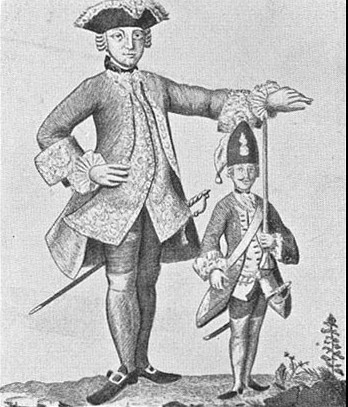Acromegaly is a chronic metabolic disorder caused by abnormal production of growth hormone after the skeleton and other organs finish growing. It most commonly affects adults in middle age, and can result in severe disfigurement, serious complicating conditions, and premature death if unchecked

Causes
Acromegaly is a syndrome that results when the anterior pituitary gland produces excess growth hormone (GH) after epiphyseal plate closure at puberty. A number of disorders may increase the pituitary’s GH output, although most commonly it involves a GH producing tumor called pituitary adenoma, derived from a distinct type of cell (somatotrophs).The cause of the increased growth hormone release is usually a noncancerous (benign) tumor of the pituitary gland. The pituitary gland, which is located just below the brain, controls the production and release of several different hormones, including growth hormone.
Acromegaly occurs in about 6 of every 100,000 adults. Because of its insidious pathogenesis and slow progression, the disease is hard to diagnose in the early stages and is frequently missed for many years, until changes in external features, especially of the face, become noticeable. Excessive production of growth hormone in children causes gigantism rather than acromegaly.
Symptoms
The effects of acromegaly vary depending on the development stage of the stricken individual. If the condition arises after the end of natural growth, the victim’s hands, feet, jaw, forehead, and ribcage will often grow outwards. But when the tumor arises earlier, in someone who hasn’t yet reached full height, a phenomenon called gigantism occurs. This state causes continuous growth, ultimately leading to an abnormally tall stature in adulthood. The extremities also grow more than the rest of the body, leading to disproportionately large hands and feet, and a characteristic large-boned face.
Over time acromegaly leads to a host of systemic problems including arthritis, diabetes, and heart disease. The tumor itself, should it grow too large, can press against the optic nerves and cause blindness. Untreated acromegalics rarely live past middle-age.
Treatment
Surgery to remove the pituitary tumor causing this condition corrects the abnormal growth hormone secretion in most patients. This surgery may not be available to patients in remote locations, so travel to a larger metropolitan area may be necessary for treatment.
Radiation of the pituitary gland is used for people who do not respond to the surgical treatment. However, the reduction in growth hormone levels after radiation is very slow.
The following medications may be used to treat acromegaly:
- Octreotide (Sandostatin) or bromocriptine (Parlodel) may control growth hormone release in some people.
- Pegvisomant (Somavert) directly blocks the effects of growth hormone, and has been shown to improve symptoms of acromegaly.
These medications may be used before surgery, or when surgery is not possible.
After treatment, periodic evaluation is necessary to ensure that the pituitary gland is working normally. Yearly evaluations are recommended.
Famous specimen
The extreme height and distinctive features of gigantism have been irresistible to Hollywood. Actors Richard Kiel (“Jaws” in James Bond movies) and Matthew McGrory (“Karl the Giant” in Big Fish) both had acromegaly. Even those acromegalics in other professions frequently seem to end up on the big or little screens. André the Giant and Paul Wright, both professional wrestlers, and Gheorghe Muresan, a basketball player, have all had parts in more than one movie or TV show. Carel Struycken, who played Lurch in the Addams Family movies, was literally pulled off the street when a woman abandoned her car to run after him and offer him a part in Sergeant Pepper’s Lonely Hearts Club Band.
- Abraham Lincoln, the 16th President of the United States, was debated at several occasions to have Marfan’s syndrome and also Acromegaly.[6][7] He grew to 1.93 m (6 ft. 4 in) in height and generally weighed less than 82 kg (180 lb). Lincoln’s body growth and energic constitution show gross evidence of pituitary hyperactivity and gonadal hypoactivity. He was a long, thin baby at birth, with unusually long, thin arms and legs.
- André the Giant, wrestler and actor [8][9] 2.13 m (7′) tall after back surgery; his original wrestling stats listed him at 2.23 m (7’4″). He died at the age of 46. (He chose not to be treated and died from cardiac complications of the disease.)
- Antonio Silva, Mixed Martial Artist, currently competing at heavyweight in the American promotion Strikeforce. Silva has a professional record of 16-3, with 11 of his 17 wins coming by way of Knockout. Silva stands at 6’4 and weighs in for fights at 264 lbs, according to sherdog.com.
- Richard Kiel, Jaws from the James Bond Movies and Mr. Larson in Happy Gilmore.[10] He grew up to 7ft 1 1/2 but is now slightly under 7ft due to age and injury
- Rondo Hatton, character horror actor in the ’30s and ’40s[11]
- Pio Pico, the last Mexican Governor of California (1801–1894), manifested acromegaly without gigantism between at least 1847 and 1858. Some time after 1858 signs of the growth hormone-producing tumor disappeared along with all the secondary effects the tumor had caused in him. He looked normal in his 90’s.[12] His remarkable recovery is likely an example of spontaneous selective pituitary tumor apoplexy.[13]
- Sir Archibald Levin Smith, British judge,[14]
- Paul “The Big Show” Wight, wrestler, also known as “The Big Show” or “The Giant”.[15]
- James McLeay, professional SANFL player, suffers from low grade acromegaly, 2.1 m, 120 kilograms.[16]
- Carel Struycken, Actor, 2.13m (7’0″).[17]
- Primo Carnera, professional boxer and World Heavyweight champion, 200 cm (6’7″).[18]
- Maurice Tillet, French professional wrestler.
- Peter Steele (Peter Thomas Ratajczyk), singer and bassist from Type O Negative, 203cm (6’8″). Died at 48 by heart failure.[citation needed]
- John Aasen, actor in silent films, particularly with Harold Lloyd; also in Vaudeville. At nearly 9 ft tall one of the two tallest men ever recorded, the other being Robert Wadlow.
- Wallace Stevens, American poet (1879-1955).
- Kevin Aucoin, make-up artist and photographer (1962-2002)








